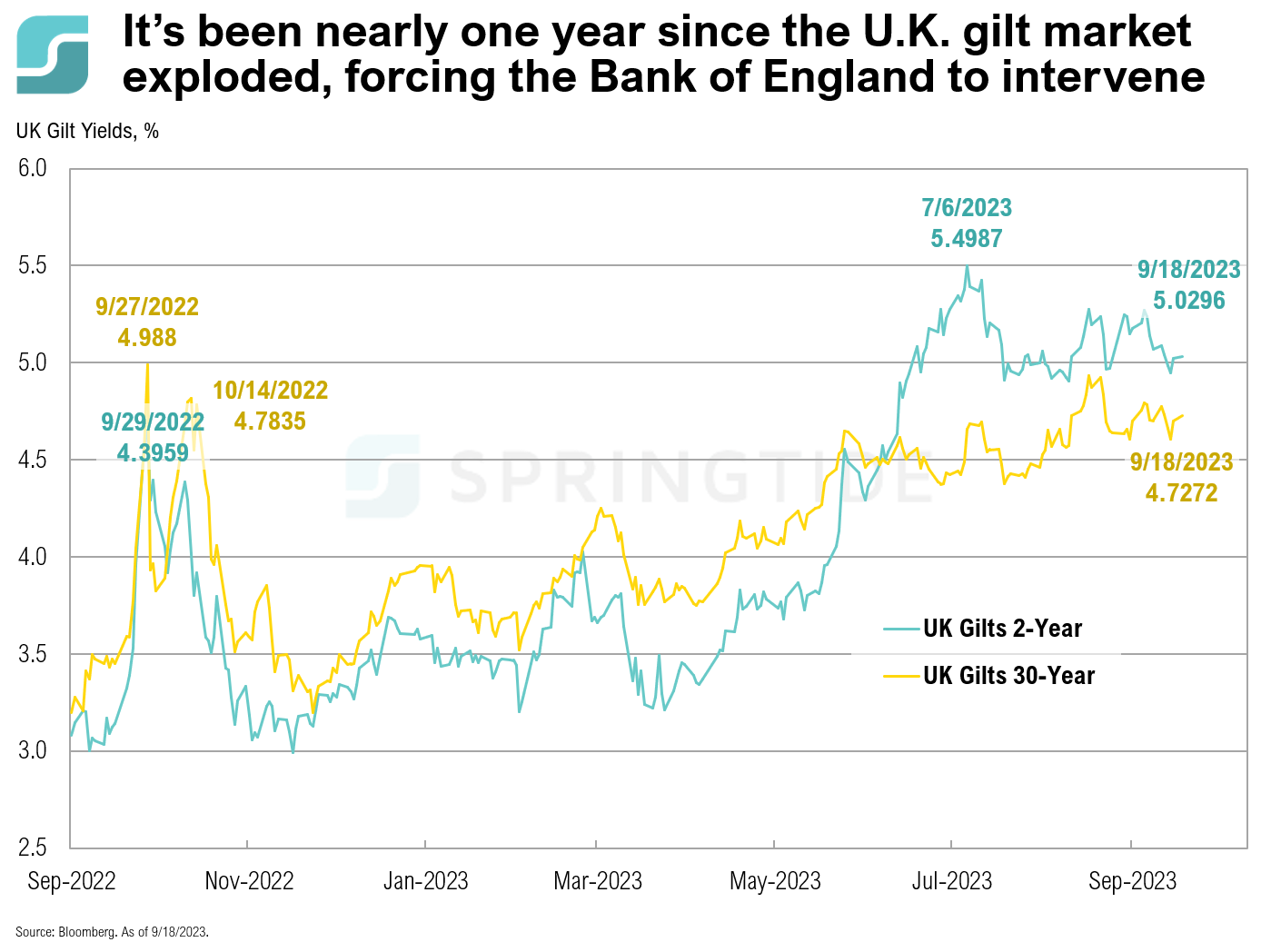SUMMARY
- On September 23, 2022, the British government announced its largest tax cuts since the early 1970s, primarily funded through borrowing, totaling over $196 billion in projected costs over the coming years. This announcement led to a sharp increase in gilt yields, further driven higher by existing worries about inflation, interest rates, and the long-term sustainability of UK government finances.
- The Bank of England had no choice but to intervene, announcing the resumption of quantitative easing on September 28, 2022. On October 11, the Bank of England ended quantitative easing, and the tax cut plan was scrapped soon after, on October 16. Prime minister Liz Truss resigned on October 20, 2022.
- Since then, the British gilt market has remained elevated. In particular, 2-year gilt yields have risen above their September 2022 levels due to concerns about sticky inflation and a strong UK labor market.
- Is there a mirror scenario emerging with UK gilt markets then and U.S. bond markets now? With higher energy prices, sticky inflation and concerns about government spending, the Federal Reserve’s rate hike decision later this week will be an important one for U.S. bond markets.

DISCLOSURES
The material shown is for informational purposes only. Any opinions expressed are current only as of the time made and are subject to change without notice. This report may include estimates, projections or other forward-looking statements; however, forward-looking statements are subject to numerous assumptions, risks, and uncertainties, and actual results may differ materially from those anticipated in forward-looking statements. As a practical matter, no entity is able to accurately and consistently predict future market activities. Additionally, please be aware that past performance is not a guide to the future performance of any investment, and that the performance results and historical information provided displayed herein may have been adversely or favorably impacted by events and economic conditions that will not prevail in the future. Therefore, it should not be inferred that these results are indicative of the future performance of any strategy, index, fund, manager or group of managers. The graphs and tables making up this report have been based on unaudited, third-party data and performance information provided to us by one or more commercial databases. While we believe this information to be reliable, SpringTide Partners bears no responsibility whatsoever for any errors or omissions.
Index benchmarks contained in this report are provided so that performance can be compared with the performance of well-known and widely recognized indices. Index results assume the re-investment of all dividends and interest. The information provided is not intended to be, and should not be construed as, investment, legal or tax advice. Nothing contained herein should be construed as a recommendation or advice to purchase or sell any security, investment, or portfolio allocation. This presentation is not meant as a general guide to investing, or as a source of any specific investment recommendations, and makes no implied or express recommendations concerning the manner in which any client’s accounts should or would be handled, as appropriate investment decisions depend upon the client’s specific investment objectives.
SpringTide Partners, LLC is a registered investment adviser with the Securities and Exchange Commission; registration does not imply a certain level of skill or training. For more detail, including information about SpringTide’s business practices and conflicts identified, please refer to SpringTide Partners’ Form ADV Part 2a and Form CRS at: https://www.springtide-partners.com/disclosures

